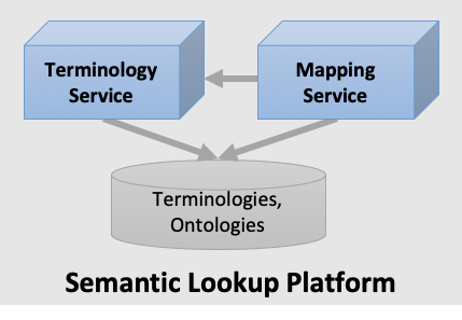The mapping service, based on Ontology Cross-reference Service (OxO), is the second service integrated into the semantic lookup platform whose key features are, finding mappings (cross references) between ontology classes, visualize mappings of different lengths and providing links to the associated terminologies inside the terminology service. Users can search a web-based interface, in which they can explore relationships between several ontologies and its terms. To visualize a brief summary of all mappings and ontologies contained in the service, the landing page displays an interactive graph with all ontologies that have cross references to others. A mapping between two ontologies exists if one ontology contains a term that is operational equivalent to a term in the second ontology or vice versa. Furthermore, the mapping service organizes its ontology data in a graph structure, which has the advantage that one can derive mappings of length greater than one. The service can display mappings up to the length of three. These mappings of different lengths help to give more insights on the term one considers. Additionally, the mapping service provides a RESTful API to retrieve data sources as well as mappings. Moreover, we have developed a Docker image one can modify, build, and use to deploy the service in a few easy steps.
